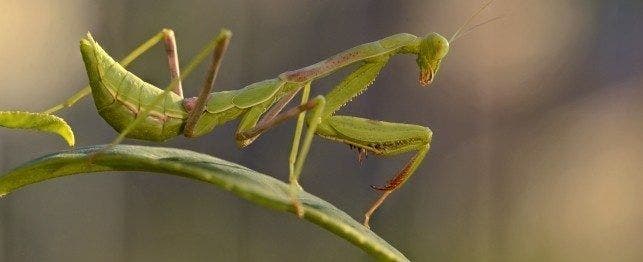
Unusual Pets – Praying Mantis
Many people consider the slender, slow-moving praying mantis to be a “holy” addition to in the garden. Others are simply fascinated with this relative of the stick insect. There’s a lot to be fascinated about.
For hundreds of years in its native China, the praying mantis (or mantid) has been used to battle insect pests in gardens. They are still used today as a safe, natural and non-chemical way to control garden pests. They have a voracious appetite, and their camouflage of green or brown with irregular patterns makes them good hunters. The praying mantis will even eat one another, given the chance. Females are notorious for eating the male after mating. Do not keep two in the same cage – you’ll probably wind up with only one eventually.
The praying mantis is the only predatory members of the mantis order. The name comes from the way the insect holds its strong, spiny front legs under the chin – as if in prayer – just before grabbing its prey with hooked. The mantis is the only insect that can turn its head to look over its back. The word mantis, by the way, is Greek for prophet.
The 1,800 different species of praying mantis vary in length from 1 inch to as long as 5 inches, with a life span of about a year. They are found in all parts of the world, with about 20 different species in the United States. A rumor has it that the praying mantis is endangered, and that it is illegal to catch or kill one. As far as can be determined this is not true, but there is no reason to harm this insect. Rather, they make wonderful and practical garden additions.